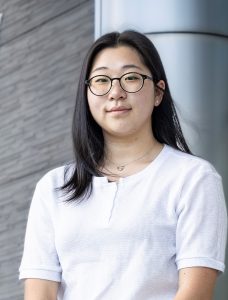Nearly two years ago, Allie Kang, a then high school junior, embarked on her internship, leading her to reach new heights through the Johns Hopkins Applied Physics Laboratory’s (APL) Student Program to Inspire, Relate, and Enrich (ASPIRE). The opportunity allowed Kang to explore the fields of STEM, conduct her own research project, while being mentored by an APL staff member. Fast forward to the summer of 2022, Kang’s experiment, which focused on the effects of radiation on food, particularly soybeans, was selected by Cubes in Space and launched into the atmosphere.
Cubes in Space is “the only global STEM program for students 11-18 years of age providing two suborbital flight opportunities on NASA missions.” The program is offered by iEDU and in collaboration with NASA’s Goddard Space Flight Center-Wallops Flight Facility, NASA’s Langley Research Center, and the Colorado Space Grant Consortium.

“I filled out the Cubes in Space application and throughout the entire process, my work and ideas were being constantly reviewed,” says Kang. “I looked at amino acid content, specifically lysine, and how those levels would be impacted when the soybeans were exposed to space flight radiation.”
Lysine is important to human health. It helps to form collagen, which is important for bones and connective tissues.
Ryan Darragh, a computational physicist at APL, mentored Kang throughout her entire ASPIRE internship, from the development of her hypothesis to the multi-step Cubes in Space application. Darragh describes how rewarding it is to be an APL mentor while experiencing firsthand Kang’s determination and success.
“Allie came up with the idea and did all the work herself. It’s great to see a high school student do that — I saw Allie’s growth, her improvements,” says Darragh. “It’s a unique opportunity for students. The Cubes in Space program is a big deal because students are competing with peers from all over the world.”
The ASPIRE program teaches students the importance of interdisciplinary collaboration. When Kang’s project traveled into space, Darragh invited Elizabeth Robinson, a biochemistry postdoctoral fellow at APL, to join their team; together they analyzed the data collection.
“Allie needed to measure the lysine content at the end of her project,” explains Robinson, who is pictured at the top of the page with Darragh and Kang. “She brought her own protocols, which was honestly great and quite amazing for a high school student — to communicate across the different scientific fields which Allie was able to do is a huge skill, especially in our line of work.”
Robinson showed Kang the techniques of measuring soybeans, from crushing them up, extracting the lysine, and quantifying lysine content.
“Allie approached scientists and experts in their fields and immediately started asking questions and coming up with her own ideas,” says Robinson. “We helped guide her in terms of the experimentation.”
Darragh adds, “ASPIRE gives students a chance to see real world applications.”
In July 2022, Kang’s project launched from NASA’s Columbia Scientific Balloon Facility near Fort Sumner, New Mexico. She was told by Cubes in Space that her project was at the highest levels of the stratosphere for at least three hours.
“To understand that my project was far from Earth was really interesting,” says Kang. “Because we took such a small sample, there was a decrease of lysine, but it wasn’t large enough to say it’s a significant impact. You have to take into consideration the small sample size and the limited time in the stratosphere. I believe in the long run and for wider scale projects, the amount of decrease would be more significant.”
As Kang’s chapter at APL has come to an end, a new one is about to open as she heads to college in the fall to study computer science.
“To work as an intern at such a prestigious organization and research center, it has pushed me to become higher achieving and to have more expectations about myself, in terms of research and networking,” says Kang. “I’m grateful for the past two years.”
Interested in learning more about the ASPIRE application process?
Topics: Alumni, Faculty and Staff, Applied Physics Laboratory, Strengthening Partnerships, Support Scholars